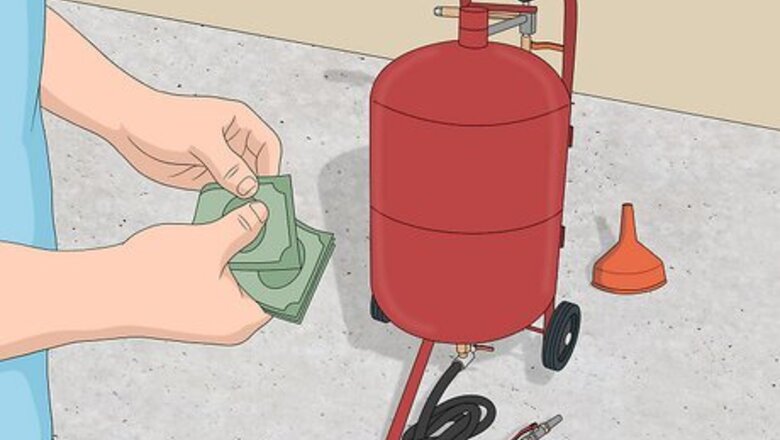
views
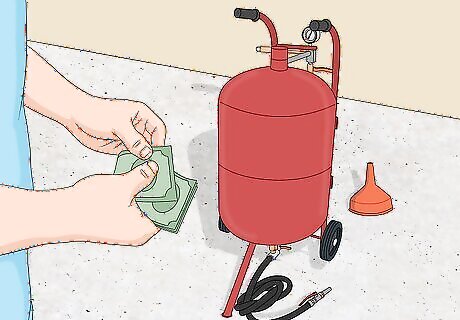
Decide if you want to rent or buy a sandblaster. If you plan to refinish an entire house or regularly repaint metal or wood outdoor projects, you may choose to buy a sandblasting cabinet. Otherwise, hardware and home improvement stores rent sandblasters for small projects. Make sure you leave the rental store with an air compressor, a blasting gun, blasting media and a blasting bucket. You may also want to pick up sheets of sandpaper and wood filler. Ask the clerk what materials will be best for your project.
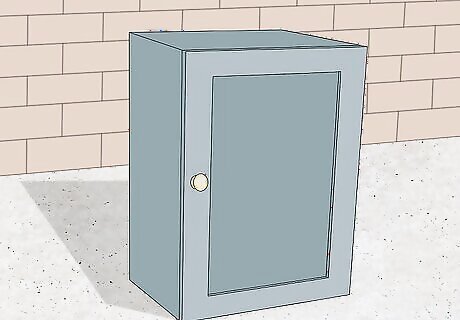
Choose a well-ventilated room in which to sandblast your cabinets. If you cannot open windows in the room where your cabinets are placed, then you may want to remove them from the wall and place them in an open area or well-ventilated garage.
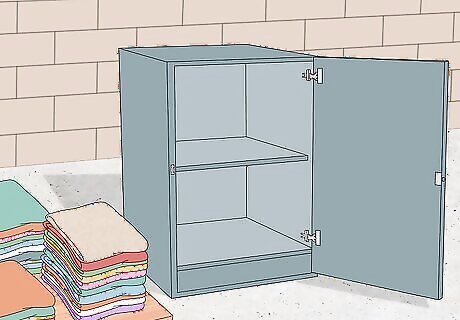
Remove all of the materials from the cabinets. Make sure there are no more dishes or objects inside the cabinets, because they can be ruined or soiled in the sandblasting process.
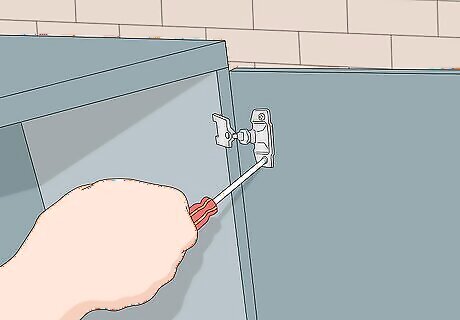
Decide if you want to remove the doors and drawers. If you sandblast the doors and drawers while they are laying on a surface, you will achieve a better finish. However, you may be worried that sand will be hard to clean in the cabinet's interior, in which case you can leave the doors on and sand and clean the corners by hand.
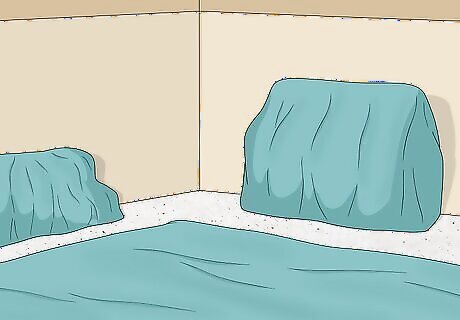
Cover the surrounding areas with tarp or thick drop cloths. Sandblasting will spread wood and sand particles throughout the area. You can also use tape to connect the drop cloths to walls and other surfaces.
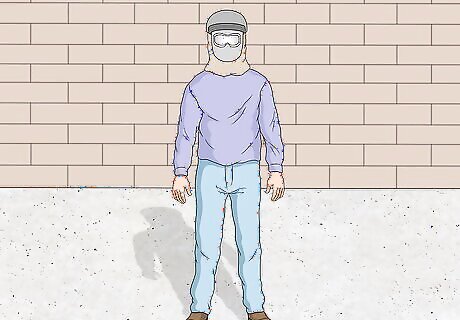
Wear protective clothing. This should include long pants, boots, a long-sleeved shirt, safety goggles and a face shield. Using a face shield with a hood will protect you from breathing in wood particles that can cause respiratory problems.
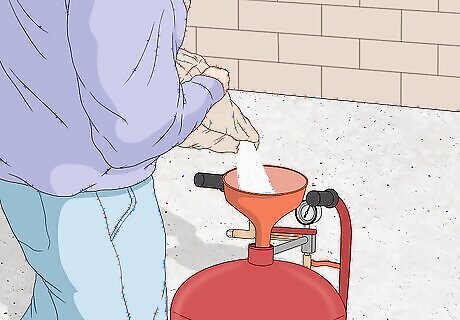
Fill your blasting bucket with the sandblasting media. This will be the particulate that you blow over the cabinets' surface to sand it.
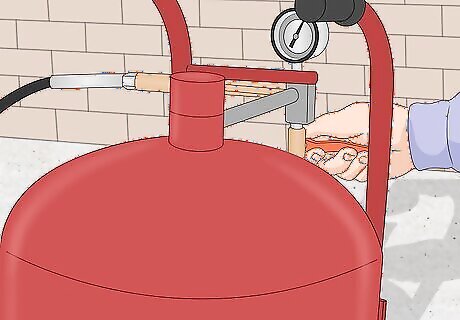
Select a setting of 100 lbs. (45.4kg) per square inch (2.5 cm). This should be adequate for most cabinet projects.
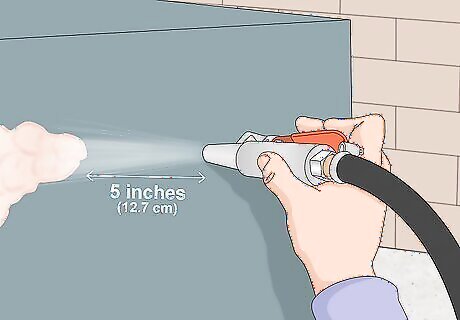
Place your blasting gun at least 5 inches (12.7cm) from the surface of your cabinets.
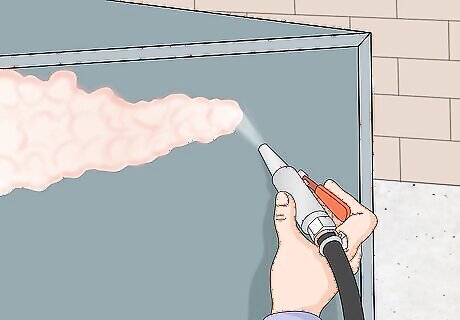
Start on 1 side of the cabinet and move horizontally to the other side. Focus on using smooth back and forth motions. This will ensure that the surface of your cabinet remains even and smooth.
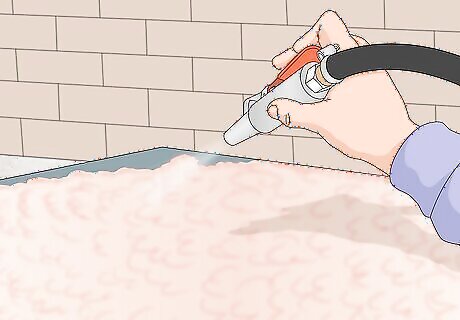
Repeat throughout your cabinet surfaces.
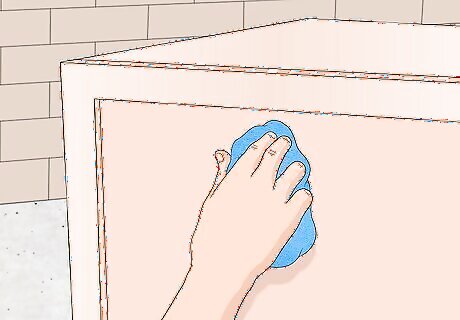
Wipe your cabinets with tack cloths. Inspect them to ensure you have removed your layer of paint or finish. Return to any spots you may have missed.
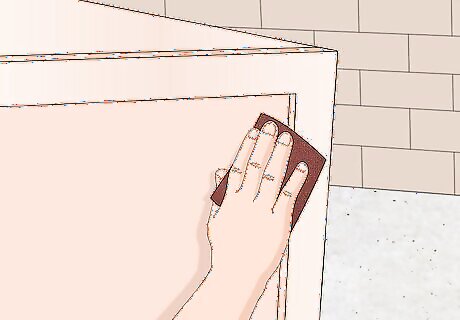
Sand portions of the cabinetry by hand if you cannot effectively sand them with the blaster.
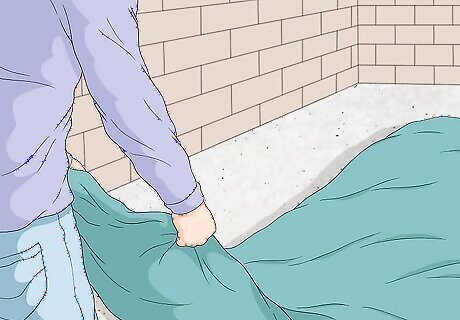
Remove the sandblaster and drop cloths. Make sure to fold them in on themselves so that the particles do not fall out. Clean the remainder of the area with a shop vacuum and tack cloths.




















Comments
0 comment